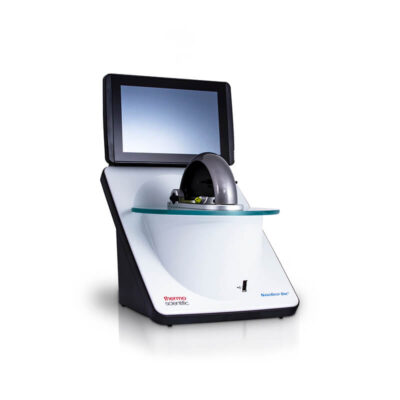While some look into the sky to see new worlds, others look down to find a once-secret world underneath. Before you can discover the exciting microscopic world that builds the visible one, you need to pick a vessel capable of exploring it.
When making a decision about which tool to buy, it’s easy to focus too closely on a single feature. While you certainly want to pick the best microscopes for your intended purpose, you should also consider a range of features that provide overall value.
Like any competitive market, microscopes come in dozens of small variations meant to fill specific niches. You make your best decision when you are aware of all the options out there and the respective value they add.
When precision matters, finding the best product requires a combination of intuition and baseline knowledge. We can provide the latter, but you’ll have to provide the former.
Key Terms for the Best Microscopes
The first broad categorisation of microscopes is the type. The type reflects the basic housing of the microscope and the arrangement of the lenses providing magnification.
Optical
The oldest models of the microscope were optical. These use a lens to reflect and magnify light. An optical microscope is one in which the subject being viewed is viewed more or less directly by the human eye.
Digital
A newer innovation, a digital microscope uses a camera to view and/or magnify the subject. Digital offers the benefit of storing images and also projecting them on a screen. Digital microscopes are all-in-one units being both a camera and scope in one piece.
It is possible to connect a digital viewer to a secondary port on some optical microscopes. These offer the benefit of personal use and group use. These are also referred to as trinocular microscopes.
Compound
A compound microscope uses more than one lens for increased magnification. Typically this is accomplished by having a set magnification for the eyepiece and further magnification through one or more objective lenses.
Refractive vs Reflective
To view an image, light is pushed into the objective lens. Objective lenses come in either refractive or reflective types.
Refractive have a coated layer that produces more overall light. Reflective reflects light with a mirror-based technology. Image quality is higher with refractive over the easier to produce reflective.
Monocular, Binocular, Trinocular
Most monocular type microscopes are meant to be handheld and portable. These offer lower magnification usually, having only the eyepiece as magnification. In standalone scopes, a monocular limits vision compared to binocular but saves space.
Binocular micoscopes provide stereo vision, making images easier to view and also offering a secondary port to attach a digital camera and still view a subject.
Trinocular microscopes are the newest and most versatile types. These offer stereo vision for one user while providing an eyepiece to attach a camera or other optical device.
Reviews
With this terminology in mind, check out these microscope reviews. These will point you in a direction, but it benefits you to look at the full details before any purchase in a breakdown or brochure.
1. Ceti Max II Trinocular Microscope with Infinity corrected optics
A high quality model that packs a lot of power. As a trinocular microscope, it comes standard with a 14-megapixel camera pre-installed, which can easily connect to a display through USB.
Light is provided from the powered base and the four objective lenses are easy to rotate and lock.
The camera comes with the unit but is detachable, making it easy to upgrade or replace only the one component.
2. Ceti Max II – Digital Lab LED Binocular Microscope with planachromatic objectives
Another great offering from Ceti (Medline), this unit comes at a more compact price to go with its more compact frame.
A 3 MP digital camera is built directly into the nose-piece. This offers the benefit of capturing and projecting images without taking up space. The downside, of course, is that it is integral to the unit and can’t be replaced solo.
Aside from a wide range of magnification offered through the objectives, one is an oil immersion lens (100x). The eyepieces are also removable and come with a second pair with different magnification, increasing the maximum magnification range.
Variable LED lights provide further options for perfect subject viewing.
3. Ceti Focus II
This compact microscope is great for students and budget-priced.
It features a four position nosepiece providing total magnification range from 40x-1000x.
One reason this rates as a best microscope for students is the battery-powered LED system. This makes the lightweight unit portable and easy to set up. For the power-conscious, it also has an adapter for standard wall use.
4. Varioom with adjustable boom arm 3.5x-90x Trinocular
This unit provides an easy-to-manipulate viewer that works in lower light. The clearance is adjustable up to to 17 inches. This scope is largely intended as a work scope, offering easy clearance for dissecting or soldering.
The magnification may seem low, but it gets hard to physically operate at 120x and above for larger specimens, when using stereoscopic systems.
5. Magnum-T POL – Digital Polarizing Microscope
The polarised lenses of this scope provide a more suitable viewing experience for pharmacology and forensics. This scope features one of the brightest objective lights on the market. It also comes supplied with a 6.7 Mpx camera (optional.
The magnification is between 40x and 600x.
6. Dino-Lite USB AM7115MZT
This compact unit sports a 5 MP camera and a powerful objective light powered through USB. The magnification goes from 10x-220x for easily movable viewing.
The provided software allows for enhancements to depth of field and polarisation. This is handy for hands-on magnification requiring manipulation.
7. Ceti Tritex Trinocular 3100.6000M
This is a fully-equipped model with high illumination from the 100W Halogen system.
The nose piece is loaded with five objective lenses, ranging up to 100x and 20x Achromatic for oil immersion.
As a trinocular, it has a camera port aligned on the rear of the scope to provide easy upper clearance. The binocular eyepiece features a dioptric compensator for clarity of single viewing.
Finding the right laboratory teaching microscopes
Teaching microscopes are an essential learning tool in laboratories in many colleges, universities and other higher education establishments. They provide students with helpful hands-on experience rather than relying on textbook images. Student microscopes need to be easy to use, robust and economical.
Within our well-known Ceti microscope range, we have upright (or compound) microscopes that are particularly suited to use in teaching environments. Ceti Max III microscopes offer an excellent price/quality balance and boast several design features that are ideal for teaching laboratories.
- Durable: A key requirement as teaching microscopes will be used by many students, often without any previous experience
- Portable: The carrying handle improves portability and enables the microscopes to be moved easily from lab to lab, or in and out of storage
- Easy to store: Thanks to inbuilt cord storage
- High image quality: Infinity Corrected Plan Achromatic objectives and widefield eyepieces ensure excellent images
- LED illumination: More energy-efficient and extremely long-lasting compared to traditional tungsten-halogen bulbs
- Photo port: The option to attach a camera enables teachers to easily share images with the whole class and allows students to capture images for projects
The Magnum, Ceti’s most popular biological microscopes, provide the added benefits of full Köhler illumination to optimise the light path to reduce image artefacts and improve contrast within the sample. The Magnum microscopes also offer more option for contrast techniques such as polarisation, phase contrast and epi-fluorescence. Remaining economically priced, they are a suitable educational microscope for more experienced learners.
Discover Your Vessel
Hunting for the best microscopes is its own journey of discovery. The more you search, the more you realise how lucky you are to live in a time where discovery is everywhere and the tools to explore are plentiful and powerful.
Whatever your need, Ceti optical instruments from Medline will have the solution.
Contact us with questions about your needs, and we’ll help you find the best tools for your school, lab, or hobby-shop.






